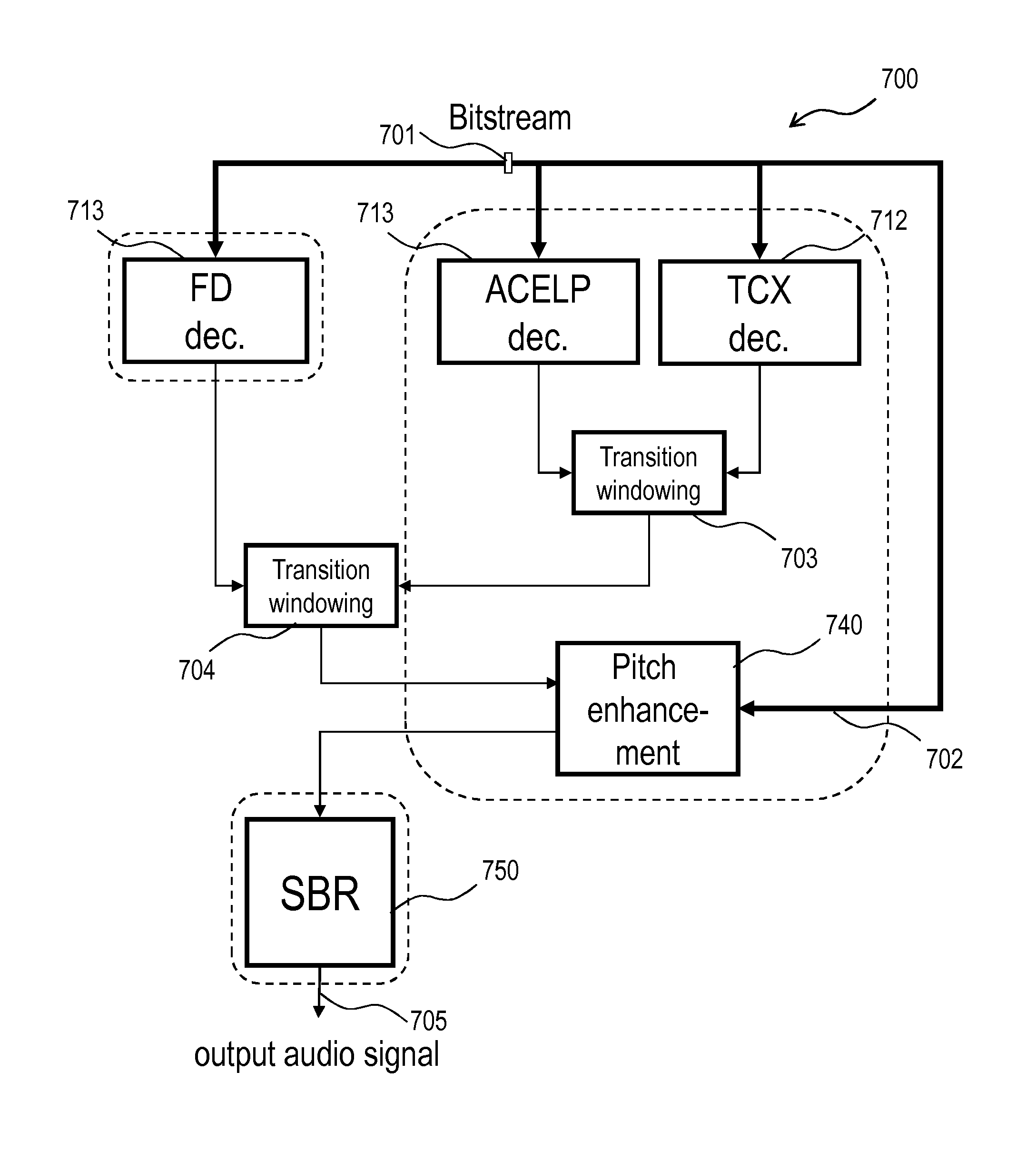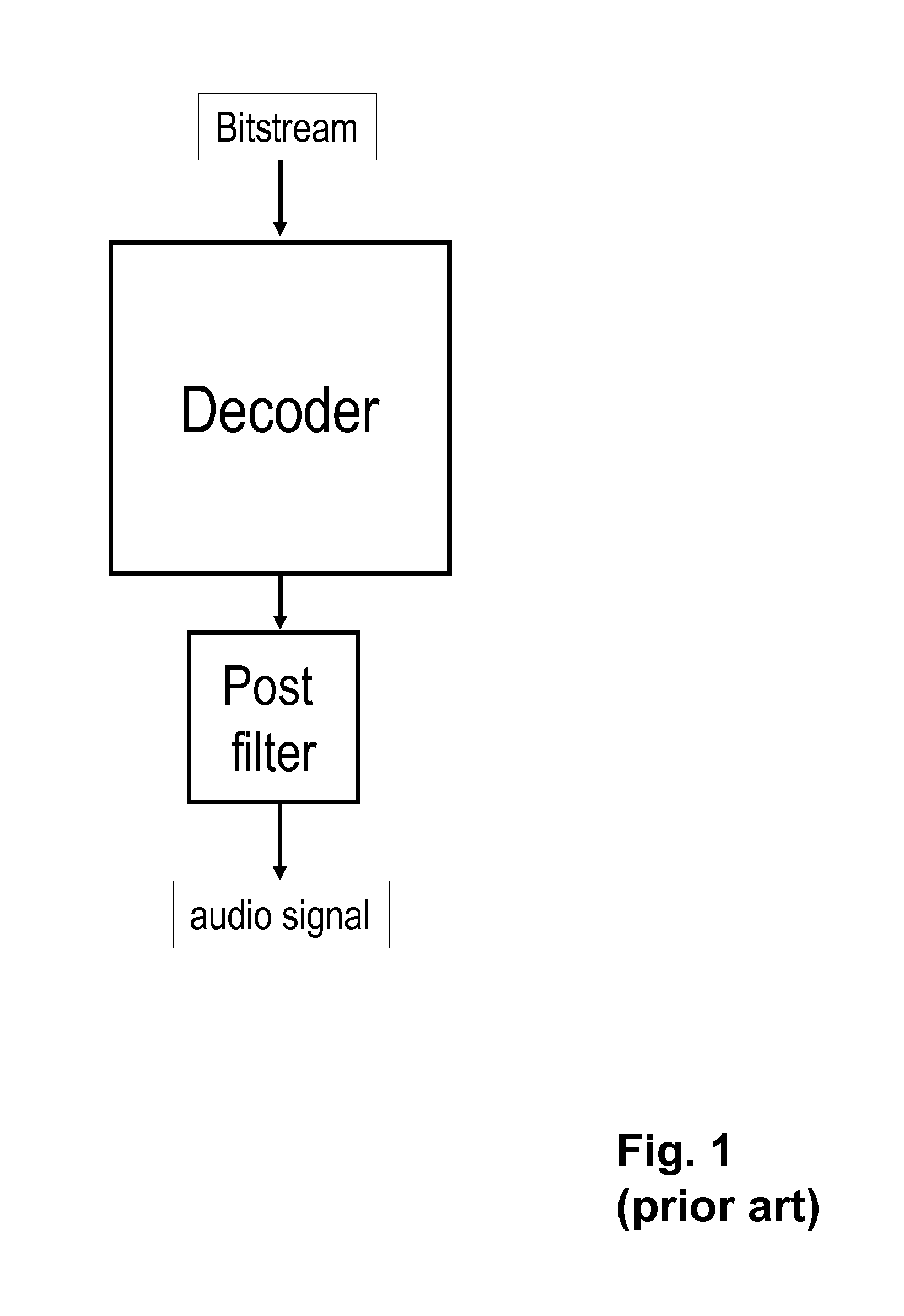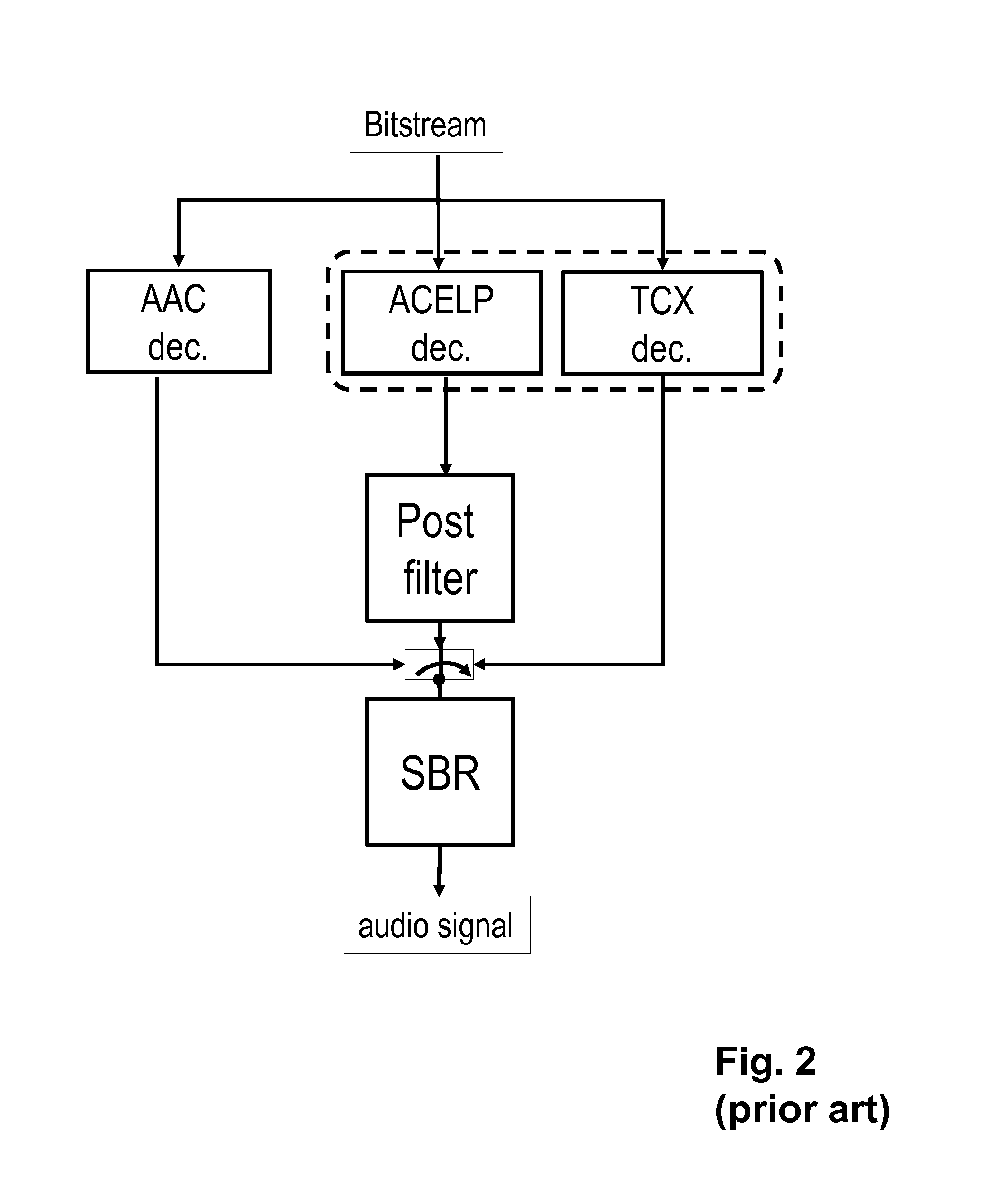Selective bass post filter
- Summary
- Abstract
- Description
- Claims
- Application Information
AI Technical Summary
Benefits of technology
Problems solved by technology
Method used
Image
Examples
embodiment 10
[0084]c) the CELP module is enabled and the post filter is disabled, wherein the preliminary audio time signal and the audio time signal coincide.[0085]12. The decoder system of embodiment 10,
[0086]the decoding section further comprising an Advanced Audio Coding, AAC, decoding module (513; 713) for decoding a bit stream signal as an audio time signal,
[0087]the control section being adapted to operate the decoder also in the following mode:
[0088]d) the AAC module is enabled and the post filter is disabled.[0089]13. The decoder system of embodiment 1, wherein the bit stream signal is segmented into time frames and the control section is adapted to disable an entire time frame or a sequence of entire time frames.[0090]14. The decoder system of embodiment 13, wherein the control section is further adapted to receive, for each time frame in a Moving Pictures Experts Group, MPEG, bit stream, a data field associated with this time frame and is operable, responsive to the value of the data ...
embodiment 26
[0127]c) CELP decoding without post filtering.[0128]27. The method of embodiment 26, wherein the steps of decoding and post-filtering selectively perform one of modes a), b), c) and
[0129]d) Advanced Audio Coding, AAC, decoding.[0130]28. The method of embodiment 20, wherein the bit stream signal is segmented into time frames and the post-filtering step is omitted for an entire time frame or a sequence of entire time frames.[0131]29. The method of embodiment 28, wherein:
[0132]the bit stream signal is a Moving Pictures Experts Group, MPEG, bit stream and includes, for each time frame, an associated data field; and
embodiment 20
[0133]the post-filtering step is omitted in a time frame responsive to the value of the associated data field.[0134]30. The method of embodiment 20, wherein said omission of the post-filtering includes one of the following: full omission of attenuation,
[0135]partial omission of attenuation,
[0136]gradually increasing attenuation, and
[0137]gradually decreasing attenuation.[0138]31. A method of decoding a bit stream signal as an audio time signal, including the steps of:
[0139]decoding a bit stream signal as a preliminary audio time signal; and
[0140]post-filtering the preliminary audio time signal by attenuating interharmonic noise, thereby obtaining an audio time signal,
[0141]characterized in that the step of decoding includes:
[0142]extracting an intermediate decoded signal representing excitation;
[0143]computing an approximate difference signal, which approximates the signal component which is to be removed from the decoded signal by the post filter, as a difference between the interm...
PUM
 Login to View More
Login to View More Abstract
Description
Claims
Application Information
 Login to View More
Login to View More - R&D
- Intellectual Property
- Life Sciences
- Materials
- Tech Scout
- Unparalleled Data Quality
- Higher Quality Content
- 60% Fewer Hallucinations
Browse by: Latest US Patents, China's latest patents, Technical Efficacy Thesaurus, Application Domain, Technology Topic, Popular Technical Reports.
© 2025 PatSnap. All rights reserved.Legal|Privacy policy|Modern Slavery Act Transparency Statement|Sitemap|About US| Contact US: help@patsnap.com



